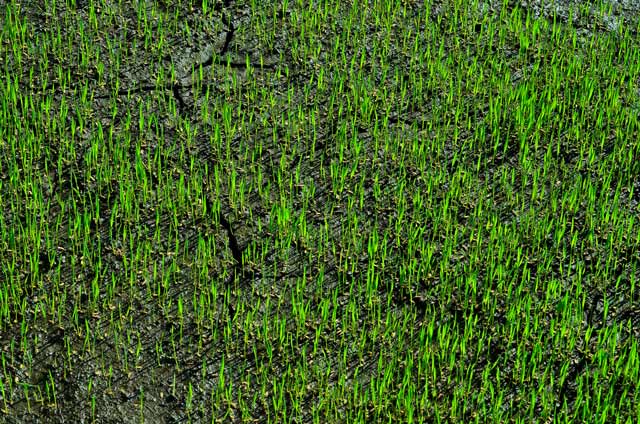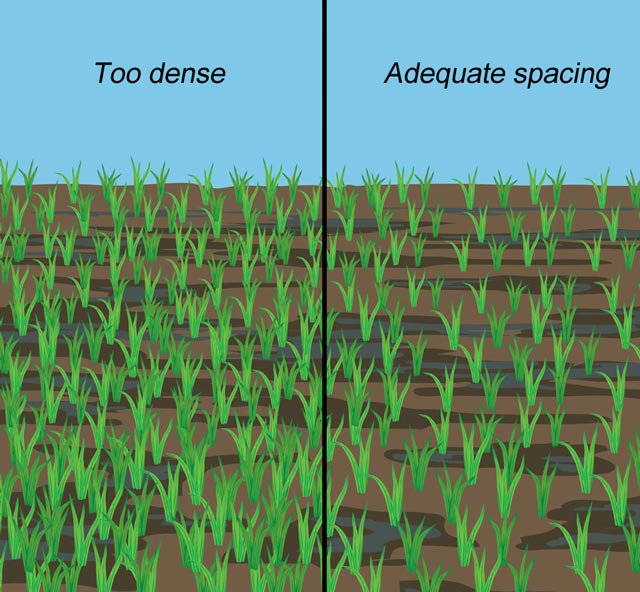Crop too dense
What it does
 Dense planting of crops results in poor crop stand and competition of nutrients from the soil. Stems can be thin and weak, and there are differences in grain maturation. Lodging can also happen during heading stage.
Dense planting of crops results in poor crop stand and competition of nutrients from the soil. Stems can be thin and weak, and there are differences in grain maturation. Lodging can also happen during heading stage.
Why and where it occurs
Crop density is a problem of direct seeded fields, especially when broadcast seeded. Crops can be surface broadcasted (wet or dry), drill seeded (using machines) or broadcast and incorporated when sown on dry fields. Pre-germinated seed is typically used during wet direct seeding.
Direct seeded fields tend to have greater problems of lodging, especially when the seed is surface sown. When seeds are broadcast, fields can have patches of either too many or too few plants depending on the skills of the broadcaster and the soil conditions where the seed lands. Farmers often use high seed rates due to poor seed quality, to compensate for losses to rats, birds and snails and to increase crop competition with weeds.
How to identify

To identify if your field is too dense, check if
- plant count is high (more than 250 plants per square meter)
- plants are too close together, and with thin stems
High plant density can also result from high seed rates or uneven seed distribution in the field. Various problems can cause low plant stands (e.g., cloddy soil, seed too deep, soil too soft at seeding, heavy rainfall at seeding, soil crusting, poor seed quality, poor seed distribution, low seed rate, water stress, muddy water at seeding, clogged seeder and/or pests such as ants, birds and rats that remove seed at planting).
To confirm the cause of problem, ask the farmer about the seeding rate.
Why is it important
Economic costs can be direct in terms of yield loss due to poor crop stand (too many or too few plants) or through the increased cost of seed when high seed rates are used.
How to manage
- For good planting or crop establishment, ensure proper flow of seeds, check seed drop during planting
- After planting, ensure good water management and well-leveled water, especially in direct seeded fields
- Ensure appropriate seed rate with even distribution of seed
- Crop stand should be in the order of 100−200 plants per sq m
- Use seed rates between 40−100 kg per ha if other factors, such as pest problems and seedbed preparation, are not a concern







